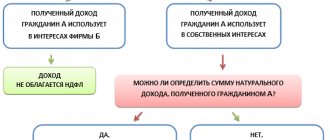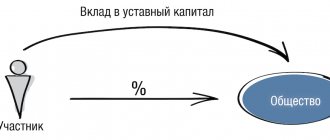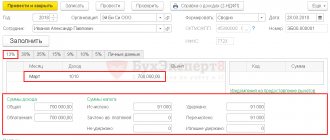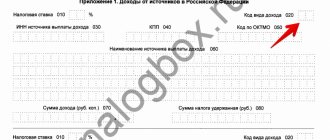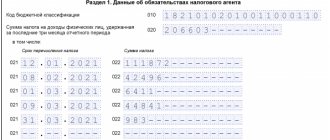In the course of an organization’s activities, one business transaction often entails various “remote” consequences, for example, in the final settlement with a business traveler, he was paid per diem in excess of the norm or paid for hotel accommodation without supporting documents. In such cases, the accountant needs to record the employee's additional income. In this article*, methodologists tell how to correctly reflect such operations in the “Salary and Human Resources Management” configuration for “1C:Enterprise 8.0” so that all regulated taxes (personal income tax, unified social tax) are calculated.
Note:
* When preparing the article, methodological materials from 1C:Consulting seminars were used.
In accordance with paragraph 2 of Article 211 of the Tax Code of the Russian Federation, income received in kind includes, in particular:
- payment (in whole or in part) for an individual for goods (work, services) or property rights, including utilities, food, recreation, education in his interests;
- goods received by an individual, work performed in his interests, services provided in his interests free of charge;
- remuneration in kind.
When receiving income in kind, the tax base is defined as the cost of these goods (works, services), other property, calculated on the basis of their prices, determined in a manner similar to that provided for in Article 40 of the Tax Code of the Russian Federation (read more about this procedure here). At the same time, the cost of such goods (works, services) includes the corresponding amount of value added tax and excise taxes.
Example
An organization engaged in tailoring outerwear to pay off wage arrears in the amount of 1,000 rubles. provides an employee with 10 shirts at a price of 100 rubles. The selling price for third-party consumers is 150 rubles. (in view of VAT).
The employee’s income additionally includes: [(150 rubles - 100 rubles) x 10 shirts] = 500 rubles.
Example 2
Trade organization to pay off wage arrears in the amount of 1,000 rubles. releases to an employee a television purchased for the purpose of resale. The average retail price for a similar product on the commodity market in a given area on the day of sale is 1,500 rubles.
An additional 500 rubles are included in the employee’s income. (1500 rub. - 1,000 rub.).
Now the accountant needs to determine what taxes are imposed on the employee’s additional in-kind income. As a rule, this income is entirely subject to personal income tax (hereinafter referred to as personal income tax). From the point of view of UST taxation, the following options are possible:
| Description of income | UST taxation procedure |
| the income was not received in connection with the employee’s performance of his duties under an employment contract (a civil law contract) | income is not subject to UST taxation in accordance with paragraph 1 of Article 236 of the Tax Code of the Russian Federation and is not reflected in the reporting |
| income was received in connection with the employee’s performance of his duties, the organization is a payer of income tax and does not classify these expenses as expenses that reduce the tax base for income tax | income is not subject to taxation under the Unified Social Tax in accordance with paragraph 3 of Article 236 of the Tax Code of the Russian Federation, but is reflected in the reporting |
| income was received in connection with the employee’s performance of his duties, the organization is not a payer of income tax or classifies these expenses as expenses that reduce the tax base for income tax | income is entirely subject to UST (if the organization is a profit tax payer) and insurance contributions to the Pension Fund (in any case) |
Income in kind and “non-natural”
People's income can be represented not only in the form of money, but also in kind. For example, individuals can receive in-kind income in the form of:
- food and personal hygiene products, clothing for those in need;
- products that are grown and produced by personal farming;
- production from hunting, fishing, picking berries and mushrooms in the forest, etc.
Question: A branch employee received income in the form of wages in kind from the parent organization. How to reflect this income in reporting forms 2-NDFL and 6-NDFL and to which budget is the personal income tax transferred? That is, income should be included in reporting at the location of the organization (head office) or at the location of the branch? The branch and head office are located in different regions. View answer
At the same time, the word “natural” is used not so much in the sense of “natural, natural”, but rather “intended not for sale, but for one’s own consumption.”
How to tax income in kind ?
IMPORTANT! From a tax point of view, such income, along with cash income, is also subject to accounting (that is, income tax is paid on it as well). This is written about in the Tax Code (Article 210). There (Article 226) it is established that firms, entrepreneurs, private lawyers and notaries must themselves calculate and pay personal income tax from the payer (most often we are talking about their employee who receives part of the salary in kind).
The procedure for processing salary payments in kind.
According to the provisions of Article 130 of the Labor Code of the Russian Federation, the system of basic state guarantees for remuneration of workers includes:

